Ever since Max went on a wild rumpus in 1963 in Maurice Sendak's
Where the Wild Things Are, picture books have quietly ventured away from stories of sweet, happy, safe childhoods into more subversive territory. Sure, plenty of gentle, value inspired books still line the shelves (and some of them are quite good), but tucked between the tales of liking yourself just the way you are and comforting bedtime stories young children can journey to imaginative, exciting and sometimes scary places. Places where no grown-ups are allowed.
When I tell people that I teach children's book writing classes, the response is often, "That's good, because there are so many bad children's books out there." I used to agree, but I've come to learn that as long as a book has a big enough audience to justify keeping it in print, it deserves a place on the shelves. That's because everyone's definition of "bad" is different. Personally, I hate picture books whose sole purpose is to teach children a lesson or moral. It's as if kids don't deserve to be entertained, but simply preached to. The worst are books written by celebrity authors, who think because their names are household words they have the authority to tell kids how to behave. To top it off, the books almost never follow the standards of good writing editors require of their lesser-known authors. But a few publishers and a lot of adults have determined these books are "good" enough to buy. And so they exist.
My favorite books operate outside the box. They offer a new way of looking at the world; they don't tell a child what to think but show a child how to think. They acknowledge all the emotions of childhood, from anger to pride to fear to silliness. It takes a special dedication to write this kind of book for the youngest children. These are the kids parents most want to protect, and who adults most want to control. Some adults are afraid of books that allow young readers to think like kids as opposed to grown-ups in training. And so I greatly admire the new crop of forward-thinking picture book creators. Here's a sampling:
 Big Momma Makes the World
Big Momma Makes the World by Phyllis Root, illustrated by Helen Oxenbury (Candlewick, 2002). What if the world was created by a woman? And what if that woman brought forth the light and the dark, the sea and the sky, with a baby on her hip and the laundry piling up in the corner? Root's Mama is a no-nonsense Earth Mother who makes the planet for her baby to crawl upon and people to swap stories with while she's sitting on her front porch. When they got out of line, she admonishes "Better straighten up down there," but most of the time she smiles and says, "That's good. That's real good."
This book is not for every family, especially if it conflicts with religious beliefs. And that's fine, because no book can be perfect for all children. But I love that's it's out there delightfully pushing boundaries for anyone who wants to read it.
The Wolves in the Walls by Neil Gaiman, illustrated by David McKean (Harper, 2003). Lucy is sure the sounds she hears in the walls of her old house are wolves. But her family doesn't believe her: "You know what they say...If the wolves come out of the walls, then it's all over." But Lucy's right, and one night a pack of wolves clamors through the walls, forcing Lucy's family to flee to the garden. After two nights outside the family's had enough, and Lucy leads them to the house where they creep into the walls and watch the wolves destroy their home with a wild party. Finally the family bursts through the walls, scaring the wolves away. Life returns to normal after several days of clean-up, but then Lucy hears other sounds one night, "...exactly like an elephant trying not to sneeze." Should she tell her family? No, they'll find out soon enough.
This book, with its dark, surreal illustrations, is too scary for many kids. But older picture book readers who like to be spooked will love it. I appreciate that the message is not the pragmatic "Don't let your imagination run away with you," but rather "Sometimes, your worst fears will come true. But you'll be able to handle it."
Achoo! Bang! Crash! The Noisy Alphabet by Ross MacDonald (Roaring Brook Press, 2003). An alphabet book

that begs to be shouted out loud, each letter is expressed through sounds that match humorous illustrations. "M" is depicted by a huge Meow! coming from a small cat, while a frightened cow runs off uttering a smaller Moo! "N" is NO! yelled by a father as his blindfolded son tries to pin the tail of a donkey on dad's back side instead of the poster. "O" is the boy's OH! and oops! while watching Dad yell OW... and stagger off in pain, tail firmly in place.
Little triumphs over big in this book, often at the expense of adults. Preschoolers will appreciate the physical humor that sometimes borders on naughty, as in the illustration of an exposed rear end of a lion tamer after the lion removes his clothes with a ROAR! and a RIP! The words, set in 19th Century wood type and printed on a handpress, give the art a nostalgic feel reminiscent of old circus and "Wanted" posters.
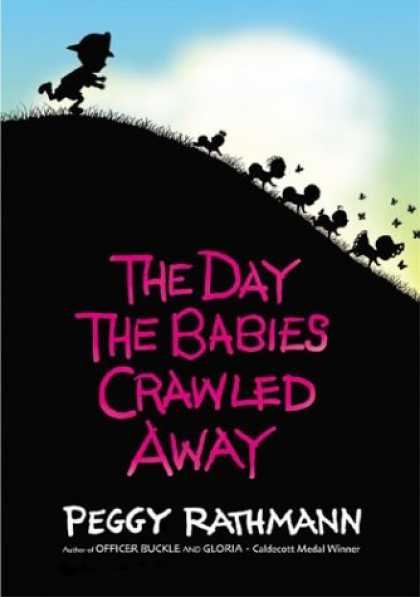 The Day the Babies Crawled Away
The Day the Babies Crawled Away by Peggy Rathmann (Putnam, 2003). A proud mother recalls the day her child (who looks to be four or five years old) saved a group of babies when they crawled away from their parents who were occupied by a pie-eating contest. The babies chased butterflies over a hill, explored a cave filled with bats, and got stuck in a tree while imitating birds. The savior wisely fed the babies a snack of blackberries and dew and let them nap in a pile before returning them to their worried parents. The black silhouette figures against a technicolor sky allow any child to imagine him or herself in the place of the brave young child in a firefighter's hat.
While this book doesn't shout "subversive," when I first read it I could imagine parents gasping at the thought of a story depicting helpless babies wandering around unsupervised, or munching on berries growing in the wild. But rather than scare children, I think this book empowers them. Kids know when they're entering the world of make-believe, and every preschooler deserves to fancy him or herself a hero once in a while.
Interested in learning how to write a book and send it to children's book publishers? Come on over to The CBI Clubhouse for audios, videos, insider writing tips and much, much more!
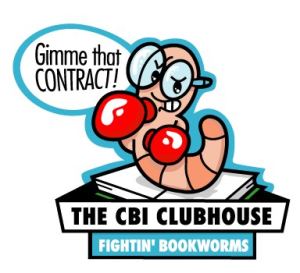
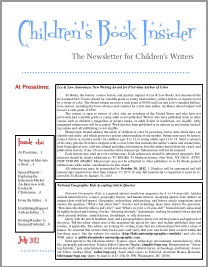
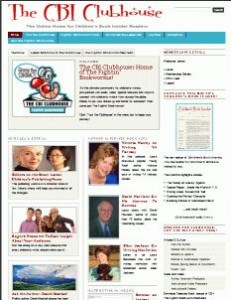




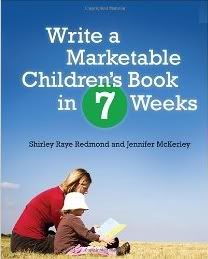


 Characters who occasionally talk in other languages (Por ejemplo, I sometimes parle francais, y tu?)
Characters who occasionally talk in other languages (Por ejemplo, I sometimes parle francais, y tu?) ust telling the stories that I knew. I knew what it was like to be in sixth grade, and to be in Margaret’s body, because that was my body. Slow growing, slow to develop….So that’s what I wrote about, because it wasn’t there for me when I was young.
ust telling the stories that I knew. I knew what it was like to be in sixth grade, and to be in Margaret’s body, because that was my body. Slow growing, slow to develop….So that’s what I wrote about, because it wasn’t there for me when I was young.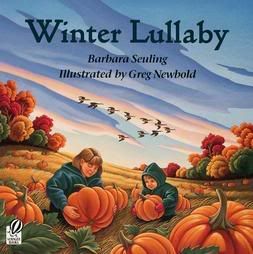
 Big Momma Makes the World by Phyllis Root, illustrated by Helen Oxenbury (Candlewick, 2002). What if the world was created by a woman? And what if that woman brought forth the light and the dark, the sea and the sky, with a baby on her hip and the laundry piling up in the corner? Root's Mama is a no-nonsense Earth Mother who makes the planet for her baby to crawl upon and people to swap stories with while she's sitting on her front porch. When they got out of line, she admonishes "Better straighten up down there," but most of the time she smiles and says, "That's good. That's real good."
Big Momma Makes the World by Phyllis Root, illustrated by Helen Oxenbury (Candlewick, 2002). What if the world was created by a woman? And what if that woman brought forth the light and the dark, the sea and the sky, with a baby on her hip and the laundry piling up in the corner? Root's Mama is a no-nonsense Earth Mother who makes the planet for her baby to crawl upon and people to swap stories with while she's sitting on her front porch. When they got out of line, she admonishes "Better straighten up down there," but most of the time she smiles and says, "That's good. That's real good." The Day the Babies Crawled Away by Peggy Rathmann (Putnam, 2003). A proud mother recalls the day her child (who looks to be four or five years old) saved a group of babies when they crawled away from their parents who were occupied by a pie-eating contest. The babies chased butterflies over a hill, explored a cave filled with bats, and got stuck in a tree while imitating birds. The savior wisely fed the babies a snack of blackberries and dew and let them nap in a pile before returning them to their worried parents. The black silhouette figures against a technicolor sky allow any child to imagine him or herself in the place of the brave young child in a firefighter's hat.
The Day the Babies Crawled Away by Peggy Rathmann (Putnam, 2003). A proud mother recalls the day her child (who looks to be four or five years old) saved a group of babies when they crawled away from their parents who were occupied by a pie-eating contest. The babies chased butterflies over a hill, explored a cave filled with bats, and got stuck in a tree while imitating birds. The savior wisely fed the babies a snack of blackberries and dew and let them nap in a pile before returning them to their worried parents. The black silhouette figures against a technicolor sky allow any child to imagine him or herself in the place of the brave young child in a firefighter's hat.